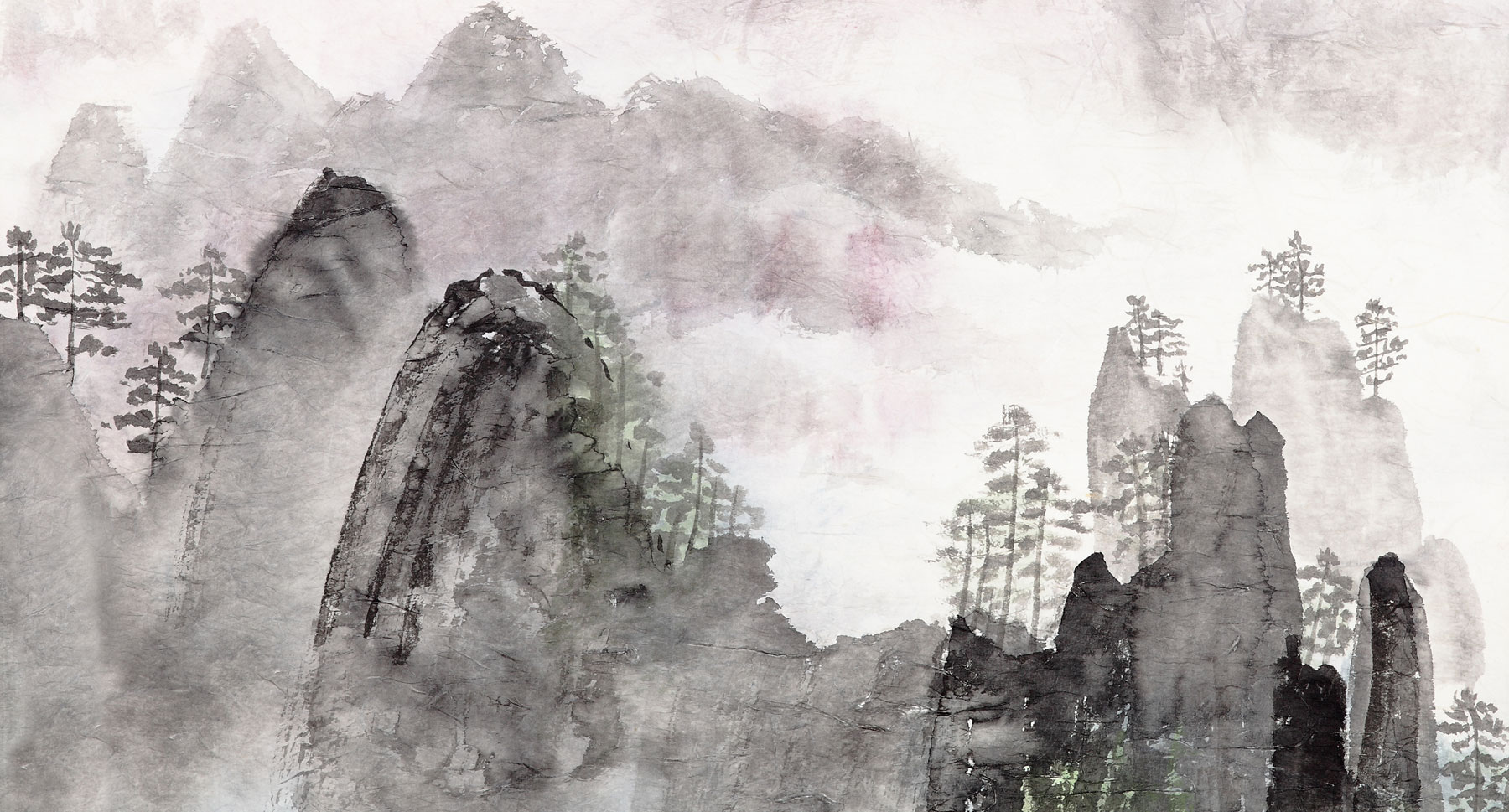Començà a la dinastia Tang . El poeta Wang Wei en fou un autor important.
East Asian writing on aesthetics is generally consistent in stating that the goal of ink and wash painting is not simply to reproduce the appearance of the subject, but to capture its spirit. To paint a horse, the ink wash painting artist must understand its temperament better than its muscles and bones. To paint a flower, there is no need to perfectly match its petals and colors, but it is essential to convey its liveliness and fragrance. In this, it has been compared to the later Western movement of Impressionism. It is also particularly associated with the Chán or Zen sect of Buddhism, which emphasises “simplicity, spontaneity and self-expression”, and Daoism, which emphasises “spontaneity and harmony with nature,” especially when compared with the less spiritually-oriented Confucianism.
In landscape painting the scenes depicted are typically imaginary, or very loose adaptations of actual views. Mountain landscapes are by far the most common, often evoking particular areas traditionally famous for their beauty, from which the artist may have been very distant. Water is very often included.
El 2005 en un viatge a Xina vaig poder tenir dues hores de classe de sumi-e, pintant canyes de bambú, els troncs amb un pinzell gruixut, les fulles d’un sol traç.
Vaig entendre que era una nova manera de art. Aquí no construíriem una única obra invertint mil hores en fer retocs minuciosos. Aquí practicaríem mil vegades com fer una fulla d’un sol traç. Un cop fet no es pot corregir. En aquest sentit, s’assembla més a la interpretació musical. Assagem una peça moltes vegades per després executar-la bé.
Ho vaig provar de fer a casa. La Laia em va convidar a fer-ho al seu estudi. En lloc de bambús i vaig voler fer pins, que és un arbre més propi del nostre paisatge. Les agulles es presten bé a l’exercici de fer-les d’un sol traç. Pel tronc vaig practicar amb un fregall per tal d’evocar l’escorça del tronc. Llàstima que no en vaig fer cap foto.


